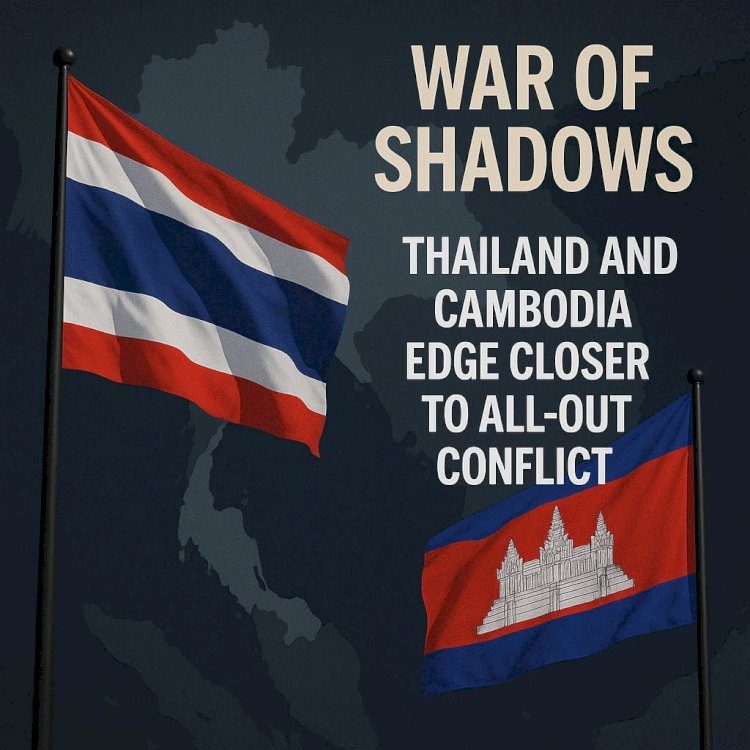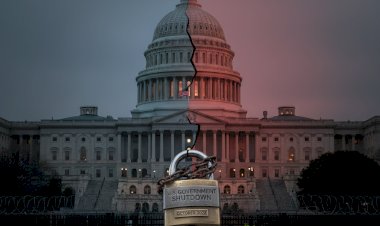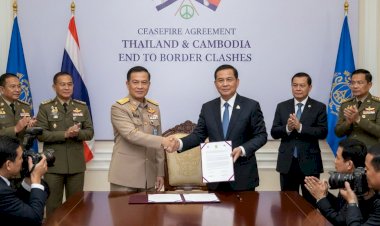War of Shadows: Thailand and Cambodia Edge Closer to All-Out Conflict

Published: July 26, 2025
Byline: Southeast Asia Desk
A decades-old territorial dispute between Thailand and Cambodia has exploded into the most violent confrontation in years, with artillery shelling, air strikes, and civilian evacuations now engulfing the once-quiet forested border. The fighting—centered around the historically contested Ta Muen Thom temple—has triggered international alarm and raised fears of a broader regional destabilization.
A Spark in the Jungle
Clashes broke out on July 24 when troops on both sides accused each other of breaching the fragile buffer zones near Surin Province in Thailand and Oddar Meanchey Province in Cambodia. Explosions rocked the border, prompting an immediate military response. Thailand deployed air force jets and artillery, while Cambodia retaliated with rocket systems aimed deep into Thai territory.
The result: dozens dead, hundreds injured, and tens of thousands displaced within days.
Civilians in the Crossfire
The human toll is mounting fast. At least 32 lives have been lost, including children and medical staff. One Cambodian rocket landed on a gas station, killing a Thai woman and her two children. Entire border communities have been uprooted, with families fleeing in panic as homes and schools turned into war zones.
In Thailand, over 130,000 residents have been evacuated from the conflict zone. Authorities have turned stadiums and university halls into temporary shelters. Cambodia is facing a similar crisis, with rural populations fleeing toward the interior.
Diplomatic Breakdown and Regional Fallout
What began as a localized skirmish has now fractured diplomatic ties. Both countries have expelled each other's ambassadors, suspended trade corridors, and closed all land border crossings. Martial law has been declared in parts of Thailand’s northeast.
Efforts to mediate the crisis are faltering. Thailand and Cambodia have brought the issue to the United Nations, but both have resisted third-party mediation offers, including from neighboring Malaysia and the ASEAN bloc. Tensions remain high as neither side shows signs of backing down.
A Long History of Tension
The roots of this crisis lie in disputed maps dating back to French colonial rule. The Preah Vihear Temple, awarded to Cambodia in a 1962 ruling by the International Court of Justice, remains a flashpoint of national pride—and resentment—on both sides. The nearby Ta Muen Thom ruins, though lesser-known, have become the latest symbol of nationalist sentiment and sovereignty.
Over the past two decades, sporadic clashes have occurred in the area, but none on this scale since 2011. Nationalist factions in both countries have seized the moment to harden public opinion, making diplomatic resolution increasingly difficult.
Uncertain Road Ahead
As of today, Cambodia has called for an unconditional ceasefire, but skirmishes continue. Thailand’s government, navigating domestic unrest and political pressure, has responded with a hardline stance.
International observers fear that continued escalation could draw in other regional powers or spill into neighboring Laos and Vietnam. Humanitarian groups have warned of a refugee crisis if evacuations continue unchecked.
An Urgent Need for De-escalation
The Thailand–Cambodia border, steeped in historical grievance and nationalist symbolism, is once again a frontline. With thousands of lives disrupted and no clear path to resolution, the coming days will be critical.
Whether leaders choose dialogue or further confrontation could determine not only the fate of those along the border—but the future stability of mainland Southeast Asia.

 content-team
content-team 
















